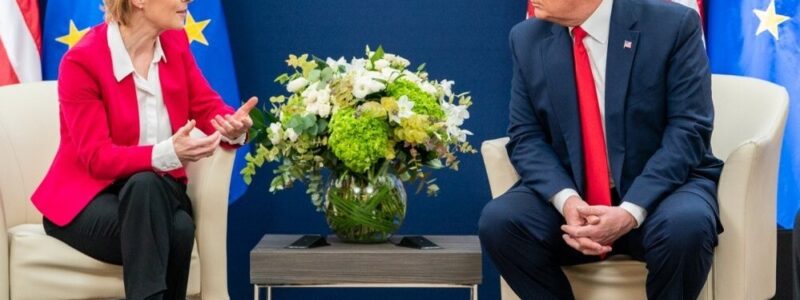
US President Donald Trump and European Commission President Ursula von der Leyen have reached a historic trade agreement that prevents the introduction of planned US-European tariffs on August 1 and establishes new rules for trade relations between the world’s two largest economies.
The US will impose a single tariff of 15% on most goods from the EU instead of the previously announced 30%. The exceptions are steel and aluminum, for which the tariff will remain at 50%.
In return, the EU commits to:
purchase $750 billion worth of energy from the US;
increase direct investment in the US economy by $600 billion;
purchase a significant amount of US weapons.
The negotiations took place in Scotland, at Trump’s golf course in Turnberry. After the meetings, strategists from both sides rushed to finalize the agreement, as multiple tariff measures of up to 50% were due to take effect on August 1.
Both sides acknowledged the compromise: Trump called it “the greatest deal ever made,” while von der Leyen stressed that it would bring stability and predictability for businesses in the EU and the US.
The agreement eases trade tensions between the US and the EU, which intensified after a series of tariff threats in the spring of 2025 — including car tariffs (25%) and corresponding EU measures of up to 25% on $21 billion worth of imports from the US. The principle of “mutual concessions”: the EU agreed to a 15% tariff and in return opened its energy and investment markets to the US.
Although some sectors, such as the European automotive and pharmaceutical industries, are awaiting further clarification, the agreement brings the parties closer together and reduces the risks of an escalating economic war.
The agreement between Trump and von der Leyen was a key milestone in US-EU trade relations in 2025. It locks in a 15% tariff, opens up opportunities for billions in US purchases and EU investments, and lays the foundation for long-term stability. Despite some restrictions (such as steel tariffs), the agreement provides the necessary economic predictability for both sides and reduces the risk of a transatlantic trade war.